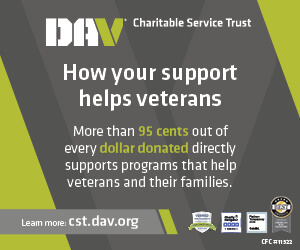“While navigating the complexities of constant change, pet insurance offers stability and the assurance that pet care is always a prioritIf service members, military families and veterans have TRICARE for health care, what do military-connected pets have?
After all, just as toddlers and teenagers might need a trip to urgent care or the ER at the most inconvenient times — during a PCS or when the military parent is TDY — pets have a way of needing attention when least expected.
While TRICARE doesn’t extend to furry friends, there is a plethora of pet insurance options, many created with military families in mind.
“Military life brings a lot of uncertainty, and pets are an important part of a family’s emotional support system during challenging times,” said Chris Hagesfeld, senior director of operations at Embrace Pet Insurance. “While navigating the complexities of constant change, pet insurance offers stability and the assurance that pet care is always a priority.”
Pet insurance usually offers coverage for things like illnesses, injuries, dental issues, hospitalizations, surgeries and prescription drugs, among other services. Americans spent more than $150 billion on their pets in 2024 alone, according to the American Pet Products Association. At the same time, approximately $4.7 billion went toward pet insurance.
Military families are often among this group — Hagesfeld said that around 25% of Embrace’s policy holders are either active duty or retired military families.
“We value and honor those who serve our country, which is why we’re proud to provide a military discount to our active-duty and veteran policyholders,” he said. “It’s our way of showing gratitude and doing a small part to recognize the sacrifices made by military families and their pets.”
These policies vary in price depending on several factors, including state, animal type, breed, age and more. A “middle of the road” policy for a healthy seven-year-old labrador in Arizona with a military owner, for instance, runs about $65 a month. A young cat, meanwhile, could be as low as $20 per month. Depending on the company and specific policy, owners still might have to pay for things like microchipping, obedience training, pre-existing conditions, DNA testing, breeding fees and cosmetic procedures like tail docking.
If you’re PCSing to an assignment in the United States, your pet is still covered. But make sure to update your new address with your insurance company as soon as possible, as your residency affects not only your rate, but potentially what veterinarian you can see, depending on the company.
Though Embrace (which allows use of any veterinarian) doesn’t cover OCONUS assignments, it does offer exceptions for deployments and short-term vacations. So check with your insurance company to make sure they offer coverage at your new assignment.
Military-connected memberships (like with Navy Mutual, USAA or the Military Benefit Association) often come with pet insurance or wellness plan discounts, so be sure to ask.
Navy Mutual, for example, offers the Wagmo Pet Wellness Plans, which reimburse for essential preventative services like vaccinations, grooming, dental care and check-ups. And don’t forget about extra benefits that may be “purrfect” for your military pet, like Embrace’s Wellness Rewards program that takes care of wellness visits, vaccinations and other preventative treatments. Other policies may offer extras like behavioral therapy for anxious pets.
Most importantly, your fur baby — and your wallet — will be taken care of in case of an emergency.
“The stressors of military life aren’t limited to people,” Hagesfeld said. “They impact pets, too.”
Read comments












































